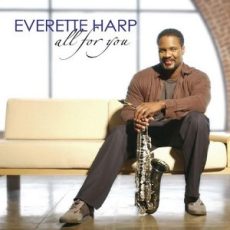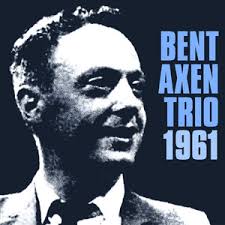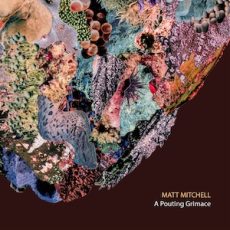
Daily Dose Of Jazz…
David Bryan Benoit was born in Bakersfield, California on August 18, 1953. He studied piano at age 13 with Marya Cressy Wright and continued his training with Abraham Fraser, who was the pianist for Arturo Toscanini. He attended Mira Costa High School and went on to focus on theory and composition at El Camino College, studying orchestration and later took film scoring classes at UCLA. He went on to study music conducting and worked with Jeffrey Schindler, Music Director for the UC Santa Barbara symphony orchestra.
He began his career as a musical director and conductor for Lainie Kazan in 1976, before moving on to similar roles with singer/actresses Ann-Margret and Connie Stevens. His GRP Records debut album, Freedom at Midnight in 1987, led his roster of top ten albums he has released. He has recorded tribute albums to pianist Bill Evans, Peanuts creator Charles Schulz and Leonard Bernstein’s West Side Story. Collaborators included the chorus group Take 6, guitarist Marc Antoine and trumpeter Chris Botti.
Benoit has arranged, conducted, and performed music for Russ Freeman and the Rippingtons, Kenny Loggins, Michael Franks, Patti Austin, Dave Koz, Kenny Rankin, Faith Hill, David Lanz, Cece Winans, David Pack, David Sanborn, The Walt Disney Company and Brian McKnight.
Pianist David Benoit, who has three Grammy nominations, has performed three times at the White House, and has a morning program on jazz radio station KKJZ in Long Beach, California, continues to perform and record..
More Posts: arranger,bandleader,composer,conductor,history,instrumental,jazz,music,piano

Daily Dose Of Jazz…
Everette Harp was born August 17, 1961 in Houston, Texas and was the youngest of eight children. His mother played the organ and gospel music was one of his earliest influences. He started playing jazz in middle school at Marshall Junior High under the tutelage of drummer Buddy Smith. He attended the High School for Performing and Visual Arts in Houston, then North Texas State University as a music major in the early 1980s.
He worked as an accountant for a short time, and played in local bands, most notably a jazz/funk group called The Franchise which released a 1987 album locally with the first recording of Harp’s There’s Still Hope. 1988 saw him moving to Los Angeles, California and touring briefly with Teena Marie, then Anita Baker.
Two years later George Duke signed him to a contract with Capitol Records to record with his group 101 North. Bruce Lundvall of Blue Note Records signed Harp to a solo contract before the group album was released. Harp’s album was produced by Duke and released by Blue Note in 1992.
Harp appeared at the Montreux Jazz Festival, would go on to appear on The Arsenio Hall Show, on Sax by the Fire, and perform on the theme songs for Entertainment Tonight and Soul Train and shared the stage with President Bill Clinton at the Arkansas Ball in 1992.
Harp has worked with Stanley Clarke, Natalie Cole, Neil Diamond, Aretha Franklin, Wayne Henderson, Al Jarreau, The Jazz Crusaders, Billy Joel, Chaka Khan, Kenny Loggins, Bobby Lyle, Peter Maffay, Marcus Miller, Chante Moore, Dianne Reeves, Eros Ramazzotti, Brenda Russell, Joe Sample, and Luther Vandross.
Saxophonist Everette Harp, who received his first nomination in 2015 for a Grammy Award for Best Contemporary Instrumental Album, continues to perform, compose and record.
More Posts: bandleader,composer,history,instrumental,jazz,music,saxophone

Daily Dose Of Jazz…
Bent Axen was born on August 12, 1925 in Copenhagen, Denmark.
Axen played for a year with Ib Renard in 1949 and in 1950 became a member of the Johnny Campbell and Max Brüel bands until 1958. He then moved on to work in Ib Glindemann’s orchestra. In 1960 he founded his own jazz quintet and also accompanied guest soloists such as Eric Dolphy in Erik Moseholm ‘s trio.
Between 1961 and 1967 he was a member of the radio jazz groups of Danmarks Radio, for which he also wrote compositions. He also performed with Don Byas. He went on to work as a theater musician and composer, first at Gladsaxe Teater and from 1971 at Folketeatret.
In 1960 he was honored as Danish “Jazz Musician of the Year”. Pianist, theatre and film composer Bent Axen, who released a half dozen albums as a leader, died on May 20, 2010.

Daily Dose Of Jazz…
Charlie Queener was born in Pineville, Kentucky on July 27, 1921 or 1923, the actual year of his birth is in question. During the Forties he worked with the Muggsy Spanier Orchestra, Harry James Orchestra, Benny Goodman Orchestra, Joe Marsala Orchestra, and Glen Gray among others.
Between 1946-50 Queener settled into Nick’s in New York and then spent much of his career freelancing with Dixieland all-stars. Among his associations were Bobby Hackett, Billy Butterfield, Jimmy McPartland, Ruby Braff, Max Kaminsky, Wingy Manone from 1954 to 1960, Wild Bill Davison and with Clarence Hutchenrider on and off from 1958 to 1973, to name a few.
He worked into the 1990s, also composed orchestral works starting in the mid-1960s but never led a record session of his own. Pianist Charlie Queener, who played in Dixieland, swing and mainstream settings, died in July 1997.
More Posts: history,instrumental,jazz,music,piano

Daily Dose Of Jazz…
Matthew Mitchell was born July 19, 1975 and grew up in Exton, Pennsylvania. He first played the piano aged six, and composed from the age of 10. He had lessons in jazz and theory at a university from the age of twelve and at this stage he was influenced by pianists Keith Jarrett and Herbie Hancock.
He attended Indiana University for three years and then completed a master’s degree at the Eastman School of Music in the late Nineties before settlling in New York City. After holding down several jobs in the city Matt decided to move to Philadelphia, Pennsylvania where he worked in a library at The University of the Arts for nine years before leaving when he had too many gigs to fit in.
2011 saw him leading the sextet Central Chain, the following year he introduced a new trio with bassist Chris Tordini and Dan Weiss on drums. During this decade Mitchell was also part of Berne’s Snakeoil band, and John Hollenbeck’s Large Ensemble and Claudia Quintet. He joined and recorded with saxophonist Rudresh Mahanthappa’s band.
Mitchell was awarded a Pew Fellowships in the Arts in 2012. He has released fifteen albums as a leader or co-leader and recorded as a sideman on thirty albums.
Pianist and composer Matt Mitchell, who is a faculty member at New York’s Center for Improvisational Music, continues to expand his jazz catalogue through performance, composition and recordings.
More Posts: composer,educator,history,instrumental,jazz,music,piano



